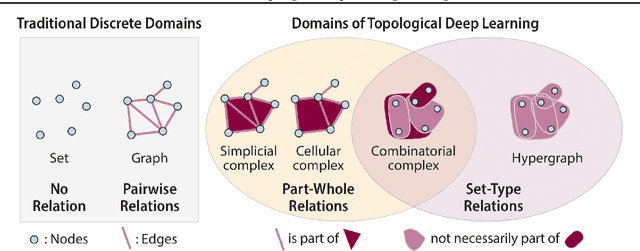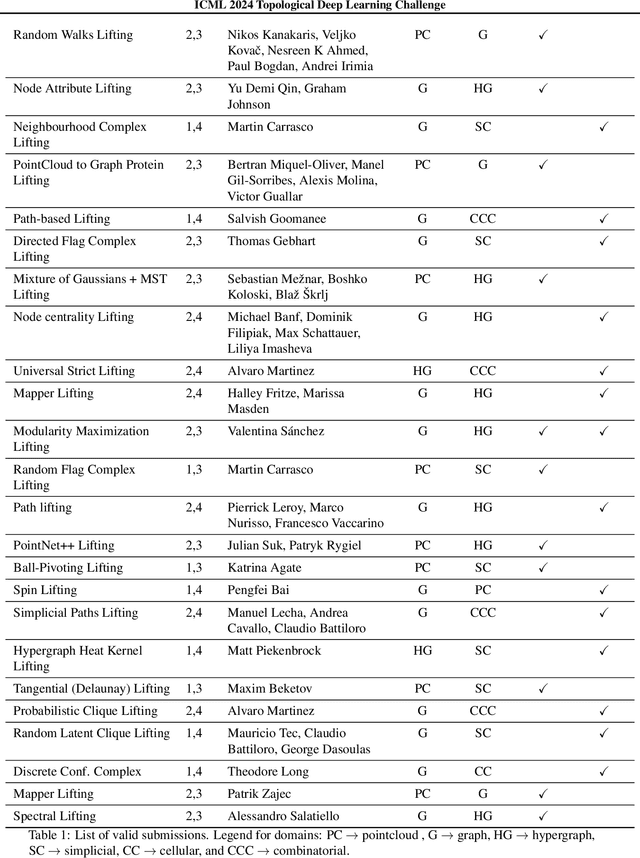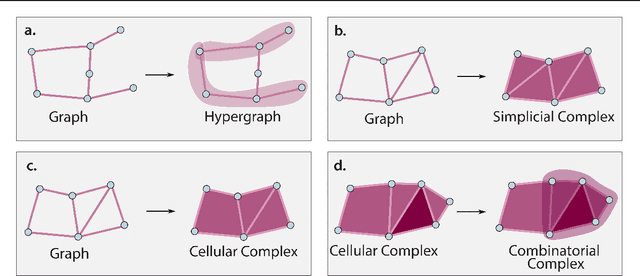Marco Nurisso
Topological obstruction to the training of shallow ReLU neural networks
Oct 18, 2024Abstract:Studying the interplay between the geometry of the loss landscape and the optimization trajectories of simple neural networks is a fundamental step for understanding their behavior in more complex settings. This paper reveals the presence of topological obstruction in the loss landscape of shallow ReLU neural networks trained using gradient flow. We discuss how the homogeneous nature of the ReLU activation function constrains the training trajectories to lie on a product of quadric hypersurfaces whose shape depends on the particular initialization of the network's parameters. When the neural network's output is a single scalar, we prove that these quadrics can have multiple connected components, limiting the set of reachable parameters during training. We analytically compute the number of these components and discuss the possibility of mapping one to the other through neuron rescaling and permutation. In this simple setting, we find that the non-connectedness results in a topological obstruction, which, depending on the initialization, can make the global optimum unreachable. We validate this result with numerical experiments.
ICML Topological Deep Learning Challenge 2024: Beyond the Graph Domain
Sep 08, 2024


Abstract:This paper describes the 2nd edition of the ICML Topological Deep Learning Challenge that was hosted within the ICML 2024 ELLIS Workshop on Geometry-grounded Representation Learning and Generative Modeling (GRaM). The challenge focused on the problem of representing data in different discrete topological domains in order to bridge the gap between Topological Deep Learning (TDL) and other types of structured datasets (e.g. point clouds, graphs). Specifically, participants were asked to design and implement topological liftings, i.e. mappings between different data structures and topological domains --like hypergraphs, or simplicial/cell/combinatorial complexes. The challenge received 52 submissions satisfying all the requirements. This paper introduces the main scope of the challenge, and summarizes the main results and findings.
Improving Neural Predictivity in the Visual Cortex with Gated Recurrent Connections
Mar 22, 2022

Abstract:Computational models of vision have traditionally been developed in a bottom-up fashion, by hierarchically composing a series of straightforward operations - i.e. convolution and pooling - with the aim of emulating simple and complex cells in the visual cortex, resulting in the introduction of deep convolutional neural networks (CNNs). Nevertheless, data obtained with recent neuronal recording techniques support that the nature of the computations carried out in the ventral visual stream is not completely captured by current deep CNN models. To fill the gap between the ventral visual stream and deep models, several benchmarks have been designed and organized into the Brain-Score platform, granting a way to perform multi-layer (V1, V2, V4, IT) and behavioral comparisons between the two counterparts. In our work, we aim to shift the focus on architectures that take into account lateral recurrent connections, a ubiquitous feature of the ventral visual stream, to devise adaptive receptive fields. Through recurrent connections, the input s long-range spatial dependencies can be captured in a local multi-step fashion and, as introduced with Gated Recurrent CNNs (GRCNN), the unbounded expansion of the neuron s receptive fields can be modulated through the use of gates. In order to increase the robustness of our approach and the biological fidelity of the activations, we employ specific data augmentation techniques in line with several of the scoring benchmarks. Enforcing some form of invariance, through heuristics, was found to be beneficial for better neural predictivity.
 Add to Chrome
Add to Chrome Add to Firefox
Add to Firefox Add to Edge
Add to Edge